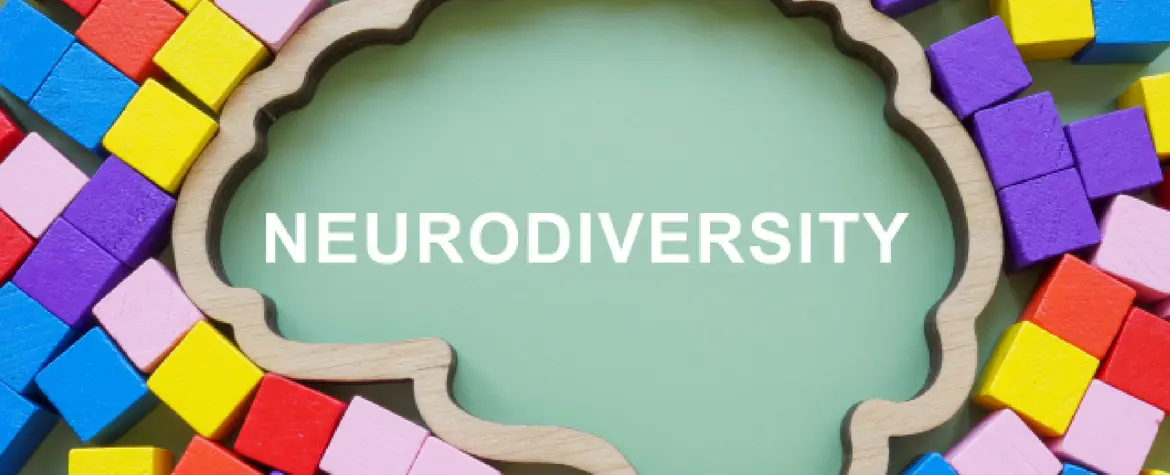Office Environments - Sensory-inclusive office environments for neurodivergent workers
Neurodivergent office workers with attention-deficit/hyperactivity disorder face unique sensory challenges. This study assesses these challenges in Switzerland while specifically evaluating the effectiveness of adjustments and their association with workplace satisfaction, well-being and whether they feel supported by their workplace.

Beschreibung
Neurodivergence (ND) encompasses conditions such as attention-deficit/hyperactivity disorder (ADD/ADHD) and autism spectrum disorder (ASD), which encounter unique sensory challenges, including heightened (hyper) or diminished (hypo) sensitivity to sounds or smells, often leading to workplace marginalization. While research on sensory challenges in office environments is limited, it tends to focus predominantly on ASD, with little attention given to ADD/ADHD. Furthermore, existing studies often lack sensory-theory frameworks and fail to consider different office characteristics and spatial adjustment possibilities. As a result, workplace adjustments for employees with ADD/ADHD remain underdeveloped, insufficiently researched, and poorly implemented worldwide, despite legal mandates requiring them.
For our study, an interdisciplinary team from Zurich University of Applied Sciences, including researchers from public health, occupational therapy, environmental psychology, and workplace management, collaborated with the Centre for Neurodiversity Research at Work at Birkbeck, University of London, along with a practice partner from Roche. Our objectives were to (1) identify specific sensory challenges faced by office workers with ADD/ADHD in various office settings, (2) explore design, operational, and personal adjustments, and (3) assess the relationship between these factors and workplace satisfaction, well-being, and perceived support.
The study employed a cross-sectional design to examine sensory challenges, adjustments, and health-related outcomes among a convenience sample of office workers in Switzerland diagnosed with ADHD/ADD, recruited through professional networks and ADHD support organizations. Data were collected using a supplemented version of the 'HOK Neuro-distinction Workplace Survey,' developed by HOK, a global leader in neuroinclusive design. Our correlational analysis revealed...
Sensory Challenges & their impact
- Sound, lack of enclosure, and temperature were the three most common challenges in offices overall.
- Experienced sensory challenges varied by participants' sensory profiles. This can inform targeted adjustments in the future. For example: a) Tactile Hypersensitivity: More likely to find textures and temperature challenging. b) Visual Hypersensitivity: More likely to find light and proximity to others challenging. c) Auditory Hyposensitivity: Less likely to find lack of enclosure challenging.
- Participants' sensory profiles were associated with their likelihood of feeling dissatisfied with their work environment, regardless of office type. This suggests that office environments of participants in Switzerland may not yet be adequately adjusted to meet the sensory needs of all employees.
Sensory Adjustments & their impact
1) The most effective adjustments for the majority of participants were:
Design: Work points in low traffic areas; Adjustable ergonomic furniture; Sit-to-stand desks; Possibility to move.
Operational: Work-From-Home policy; Flex hours working during minimal distractions; Intermittent breaks
Personal: Working in low-traffic areas; Using day planners; Visual checklists; Use headset to tune out background office noise
2) Effectiveness of adjustments vary by workers' sensory profile. For example:
Auditory Hypersensitivity: More likely to experience noise-cancelling headphones as effective.
Auditory & Visual Hypersensitivity: More likely to experience areas to retreat to as effective.
Auditory Hyposensitivity: Less likely to experience work points in low-traffic areas as effective.
Tactile Hyposensitivity: More likely to experience hands-on tactile elements as effective.
3) Workers who are satisfied with their workplace adjustments are statistically more likely to experience higher levels of wellbeing, higher workplace satisfaction and feel significantly more supported by their workplace.
Our study shed light on the sensory challenges faced by individuals with ADD/ADHD in office environments and evaluated the perceived effectiveness of various adjustments, as well as their impact on workplace satisfaction, support, and well-being. The findings suggest that adjustments have a significant influence on occupational health, underscoring their importance in creating inclusive and healthy workplaces. Furthermore, we found that individuals' sensory profiles are linked to both the sensory challenges they experience and the effectiveness of adjustments, highlighting the potential for targeted interventions. Thus, we infer that workplace adjustments should be diverse and tailored to meet the varying sensory needs of employees. Overall, this study fostered a deeper understanding of the specific needs of employees with ADD/ADHD in office spaces. These findings will inform and refine our planned future studies, ensuring a more comprehensive and nuanced approach to addressing the sensory needs of neurodivergent workers.
Future studies by our team will include a qualitative exploration of the contextual factors influencing sensory challenges and the effectiveness of adjustments, along with longitudinal quantitative studies to build a stronger evidence base. These efforts will support the development of universal design principles for neuro-inclusive workplaces that accommodate diverse sensory needs and benefit all employees.
Eckdaten
Projektleitung
Projektteam
Prof. Dr. Nancy Doyle, Eunji Häne, Dr. Beate Krieger, Prof. Dr. Frank Wieber
Projektpartner
Roche Pharma (Schweiz) AG
Projektstatus
abgeschlossen, 03/2024 - 05/2024
Institut/Zentrum
Institut für Facility Management (IFM); Institut für Ergotherapie (IER); Institut für Public Health (IPH)
Drittmittelgeber
NTN Innovation Booster / Technology & Special Needs
Projektvolumen
10'000 CHF
